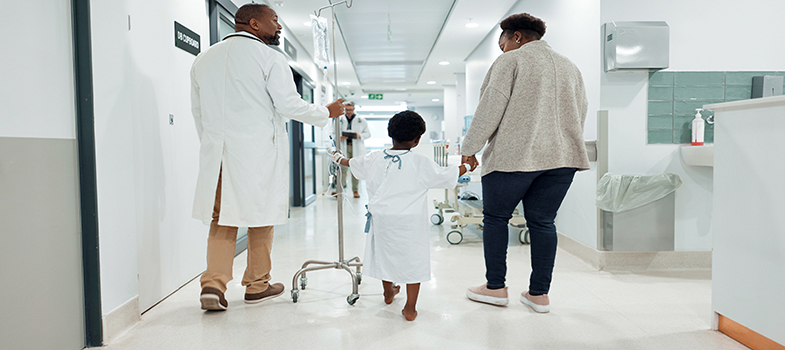9.1 Incorporating gender considerations into AMR research and interventions
In 2024 the WHO’s National Action Plans and Monitoring and Evaluation team identified several recommendations for addressing equities in AMR. These recommendations are summarised below. Highlights include the need for:
- multisectoral action and coordination that can cut across One Health domains as well as governance of areas such as water, sanitation and hygiene (WASH), housing, health systems and transport
- data disaggregated by key equity indicators, including sex, age, geographic location (at minimum), and ideally other social stratifiers such as (but not limited to) socioeconomic status, ethnicity, refugee status and disability
- incorporation of equity considerations into AMR national action plans (NAPs) and into multisectoral AMR coordination
- (in the longer term) improved access to WASH and essential health services, with the goal of preventing resistant infections in the first place.
Summary of AMR and gender recommendations
Overarching
- Short term. Capture and disaggregate data on AMR and surveillance of antimicrobial use and other relevant data by, at minimum, sex and age and, where feasible, other social stratifiers.
- Short term. Review existing national plans or strategies in the health sector or other relevant areas and incorporate policies or actions that strive for gender equality into the NAP on AMR.
- Medium term. Promote research to strengthen the evidence base on the intersections between gender and AMR.
Effective governance, awareness and education
- Short term. Promote equal participation of women, men and other vulnerable groups and/or groups facing discrimination in the multisectoral AMR coordination mechanism and technical working groups.
- Short term. Include representation from gender experts in the multisectoral AMR coordination mechanism.
- Short term. Use context-specific messages, language and images in AMR awareness and education materials that actively address harmful gender norms and promote gender equality.
- Short term. Use different and tailored approaches to raise awareness [of] AMR among vulnerable groups and/or groups facing discrimination.
- Medium term. Strengthen the knowledge of health workers at all levels of healthcare on gender inequalities in the prevention, diagnosis and treatment of (drug-resistant) infections.
Strategic information through surveillance and research
- Short term. Report on patients’ sex, age and, where feasible, other social stratifiers as part of routine surveillance systems on AMR and antimicrobial use.
- Medium term. Analyse, report and act upon the key gender-related inequalities identified from sex-disaggregated surveillance data on AMR and antimicrobial use.
- Long term. Invest in new diagnostics for infections that disproportionally affect women such as (drug-resistant) urinary tract infections.
Prevention
- Medium term. Improve WASH and waste management infrastructure in health facilities and community settings to ensure infrastructure is available, accessible and safe for all genders, and does not perpetuate stigma and discrimination.
- Medium term. Identify and address gender inequalities in the risk of exposure to (drug-resistant) infections among healthcare workers and in community settings. On vaccination, evidence supports the set of recommendations in the WHO Immunization Agenda 2030: Why Gender Matters (2021) report of gender mainstreaming across the entire immunisation programme cycle.
Access to essential health services
- Medium term. Deliver culturally sensitive and gender-responsive health services for the prevention, diagnosis and treatment of (drug-resistant) infections.
- Medium term. Ensure health insurance and/or health benefit packages cover access to health services, diagnostics and antimicrobials for the treatment of (drug-resistant) infections without leaving behind vulnerable populations.
- Short term. Identify and address gender inequalities in access to quality-assured medicines including antimicrobials, focusing on specific groups of women or men who might be at a higher risk of purchasing substandard or falsified antimicrobials.
- Medium term. Update and implement standards on the forecasting and procurement of medicines including antimicrobials by undertaking an assessment of the local epidemiology of infections based on sex to ensure all relevant antimicrobials are included.
Timely, accurate diagnosis
- Long term. Conduct retrospective reviews of diagnostic services for different (drug-resistant) infections to identify and address any gender inequalities.
Appropriate, quality-assured treatment
- Medium term. Apply a gender analysis in regular retrospective prescription audits to identify unconscious gender biases or inequalities in prescribing practices.
- Medium term. Conduct a gender assessment of the unintended effect of policies or regulations that aim to reduce over-the-counter [sales] of antimicrobials on access to essential antimicrobials.
9 Addressing equity in AMR




